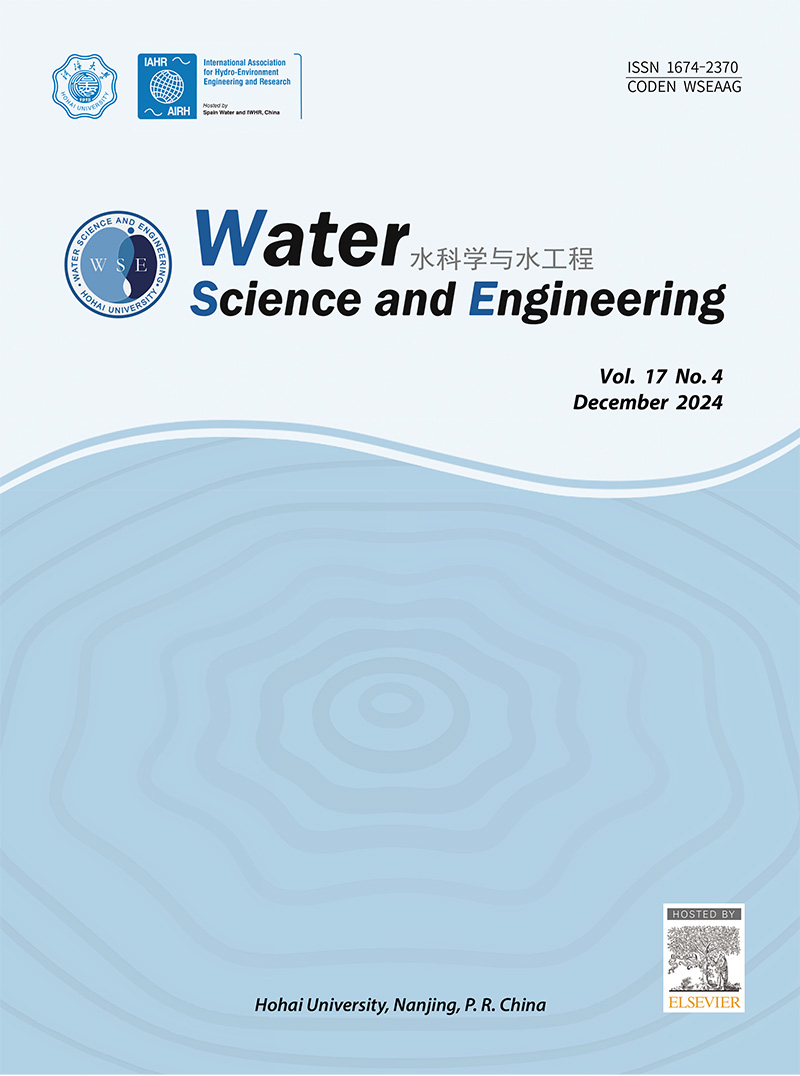了解气候变化导致的海平面上升对越南庆和省芽庄湾 Ba Lang 海滩水动力和沉积物动力学的影响
IF 4.3
Q1 WATER RESOURCES
引用次数: 0
摘要
巴朗沙滩位于越南中部芽庄湾北部,是著名的旅游景点。然而,由于自然原因(如热带低气压、风暴和季风)以及人为影响(如水力发电、挖沙和海岸工程),它们的海岸线和海岸侵蚀正在后退。根据越南自然资源与环境部的预测,到本世纪末,在代表性浓度路径(RCP)8.5 的情况下,全球气候变化将导致从大兰角到基加角(包括巴朗海滩)沿岸的海平面上升 74 厘米。全球气候变化导致的海平面上升预计将加剧海岸侵蚀和海岸线后退问题。本研究使用 MIKE 21 软件包中的波谱模块 (MIKE 21 SW)、流体力学模块 (MIKE 21 HD) 和输沙模块 (MIKE 21 ST) 等耦合数值模型,模拟了波浪、海流场和巴朗海滩沿岸的沉积物动力学,并考虑了 SLR 的影响。这些模型与 2016 年 12 月测量的实地数据进行了校准。结果表明,在季风条件下,SLR 导致波高增加,流速降低,沉积物总量减少。在可持续土地退化和极端事件的共同影响下,波高的增加甚至会加剧。本文章由计算机程序翻译,如有差异,请以英文原文为准。
Assessing impacts of climate change-driven sea level rise on hydrodynamics and sediment dynamics along Ba Lang beaches in Nha Trang Bay, Khanh Hoa, Vietnam
The Ba Lang sand beaches, located north of the Nha Trang Bay in Central Vietnam, are famous tourist attractions. However, they are experiencing shoreline and coastal erosion retreat, which is attributed to natural causes (such as tropical depressions, storms, and monsoons) as well as human impacts (such as hydropower generation, sand dredging, and coastal works). According to the forecast of the Vietnam Ministry of Natural Resources and Environment, global climate change will cause the sea level to rise by 74 cm along the coast from the Dai Lanh Cape to the Ke Ga Cape (including the Ba Lang beaches) by the end of this century in the representative concentration pathway (RCP) 8.5 scenario. Sea level rise (SLR) due to global climate change is expected to aggravate the coastal erosion and shoreline retreat problems. In this study, coupled numerical models with the spectral wave module (MIKE 21 SW), hydrodynamic module (MIKE 21 HD), and sand transport module (MIKE 21 ST) in the MIKE 21 package were used to simulate waves, current fields, and sediment dynamics along the Ba Lang beaches considering the impact of SLR. These models were calibrated with the field data measured in December 2016. The results showed that SLR caused the wave height to increase and reduced the current speed and total sediment load in monsoon conditions. The increase in wave height was even intensified under the joint impact of SLR and extreme events.
求助全文
通过发布文献求助,成功后即可免费获取论文全文。
去求助
来源期刊

Water science and engineering
WATER RESOURCES-
CiteScore
6.60
自引率
5.00%
发文量
573
审稿时长
50 weeks
期刊介绍:
Water Science and Engineering journal is an international, peer-reviewed research publication covering new concepts, theories, methods, and techniques related to water issues. The journal aims to publish research that helps advance the theoretical and practical understanding of water resources, aquatic environment, aquatic ecology, and water engineering, with emphases placed on the innovation and applicability of science and technology in large-scale hydropower project construction, large river and lake regulation, inter-basin water transfer, hydroelectric energy development, ecological restoration, the development of new materials, and sustainable utilization of water resources.
 求助内容:
求助内容: 应助结果提醒方式:
应助结果提醒方式:


